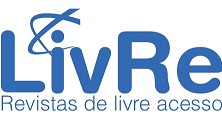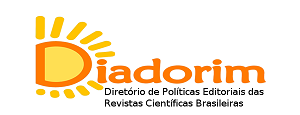LAND USE AND LAND COVER CHANGE ANALYSIS AND REGIONAL PLANNING IN MATOBIBA
DOI:
https://doi.org/10.20873/rtg.v12i27.15281Keywords:
Land Use and Land Cover, Cerrado, Land Change ModelerAbstract
The region known as MATOPIBA (Region of the boundaries of the States of Maranhão, Tocantins, Piauí and Bahia) has, in recent decades, undergone strong changes in its natural vegetation due to the advance of Agribusiness. The Cerrado has given way to pastures and large-scale agriculture. This work aims to compare the advance of agriculture over 30 years, with a special focus on how each class of vegetation has been affected, either through direct replacement by agriculture or due to indirect impacts. For this, environmental scenes produced by the classification of Landsat sub-scenes [5 and 8] were used. Based on those images “Losses and Gains” graphics produced by the LCM (Land Change Modeler) model belonging to the IDRISI Selva software were analyzed. As a final result, an expansion of Agriculture over certain types of native vegetation were observed and the progressive decrease in the density of preserved vegetation were identified as a side effect.
References
CAMPBELL, J. B. Introduction to remote sensing. New York: The Guilford Press,. 622 p. 1996.
CONGEDO, L. Semi-Automatic Classification Plugin Documentation. Release 6.0.1.1. 2016. DOI:10.13140/RG.2.2.29474.02242/1.
EASTMAN, J. R. IDRISI Manual. IDRISI Andes Guide to GIS and Image Processing. Manual Version 15.00. Clark University, Worcester, MA-USA. pp. 240-260. 2006.
EMBRAPA - Empresa Brasileira de Pesquisa Agropecuária. Sobre o Matopiba. Disponível em: https://www.embrapa.br/tema-matopiba/sobre-o-tema. Acesso em: 05 de dezembro de 2022.
GUIDOLINI, J. F.; ALMEIDA, A. M.; VALLE R. F. Jr; SCHULER A. E. e ARAÚJO, M.V.N. Modelagem da dinâmica do uso e ocupação do solo (1975 a 2010) na bacia do Rio Uberaba, município de Veríssimo – MG. Anais ... XXXIV Congresso Brasileiro de Ciência do Solo, Florianópolis/SC, 2013. https://ainfo.cnptia.embrapa.br/digital/bitstream/item/97429/1/modelagem-da-dinamica.pdf.
HALL, P. Cidades do amanhã. São Paulo: Perspectiva, 1995.
PASCHOAL, L. G.; DE MORAIS, F. Dinâmica do Uso e Ocupação da Terra em Área de Expansão da Fronteira Agrícola no Baixo Curso do Rio Palmeiras, Estado do Tocantins. Revista do Departamento de Geografia. Universidade de São Paulo, v. 37 pag. 15-29. 2019 DOI: 10.11606/rdg.v37i0.154044.
REIS, R. Planejamento urbano e regional. Londrina: Editora e Distribuidora Educacional S.A., 2019. 232 p.
SANTOS, M. Pensando o espaço do homem. São Paulo: Edusp. 2004.
SILVA, N. L.; FONSECA, B. M. Análise espaço-temporal das mudanças no uso e cobertura do solo no município de São Thomé das Letras. Caderno de Geografia, v.26, n.45, 2016 ISSN 2318-2962.
SPERA, S. A.; GALFORD, G. L.; COE, M. T.; Macedo M. N.; Mustard J. F. Land‐use change affects water recycling in Brazil's last agricultural frontier, 2016. https://doi.org/10.1111/gcb.13298.
Downloads
Published
How to Cite
Issue
Section
License
Copyright (c) 2023 Tocantinense Journal of Geography

This work is licensed under a Creative Commons Attribution-NonCommercial-NoDerivatives 4.0 International License.
Revista Tocantinense de Geografia does not remunerate any author for the publication of their texts. The contents of the texts published in this journal are the responsibility of the authors.








.png)












